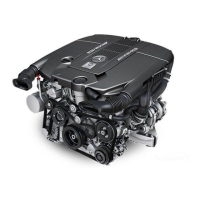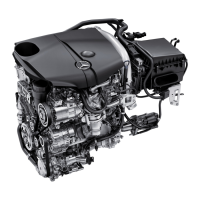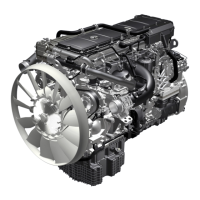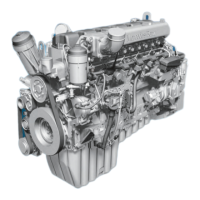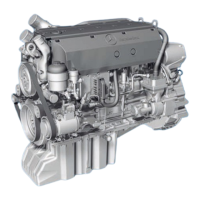Diagnose
Status September 2003 (EvoBus-Service / AFT) Page: 67 of 83
• The MR EGM detects the event "Measuring range implausible“ (fault code 8417) when the "Lambda-
probe heating current" is less than 0.8 A or greater than 1.80 A for at least 5 seconds following the
heat-up phase. In case of a fault, the Engine protection: lambda lean-controller probe becomes active.
4.1.27 Lambda correction factor
The lambda correction factor is a function variable calculated by the EGM. This variable is calculated in
the lambda controller function block primarily from the variables target lambda and the measured actual
lambda. The lambda correction factor is a very significant variable for the lambda-controlled lean engine.
For a warm engine this should be approx. ± 5 % in stationary operating points. A positive lambda
correction factor means that – always starting from the target lambda dependent on the operating point –
the combustion is too lean so that the engine control must inject gas as a reaction. Conversely, a
negative lambda correction factor means that the combustion is too rich, i.e. too much gas is injected
(possible indication of defective gas injectors or faulty air mass detection).
4.1.28 Air mass
The air mass is calculated from a map as a function of the boost pressure and the engine speed taking
the charge-air temperature and target lambda into account.
4.1.29 Gas mass
The gas mass is a function variable calculated by the EGM based on the previously calculated air mass.
The calculated gas mass is injected into the intake manifold by means of corresponding actuation of the
gas injectors.
4.1.30 Firing angle (Cylinder 1)
Firing angle in °Crankshaft before ignition TDC of the first cylinder.
4.1.31 Turbocharger pulse duty factor
The pulse duty factor with which the electropneumatic converter of the wastegate is actuated.
4.1.32 Battery voltage
The supply voltage of the engine control unit is calculated every 10 ms. The calculated voltage is
smoothed with a low-pass filter.
The supply voltage of the control unit is checked for the specified limits. If a limit is exceeded or dropped
below, a fault is entered in the fault memory after the fault debouncing time expires. Checking for
undervoltage is not carried out during starting, i.e. the starter is actuated by the engine control unit or in
the "Starting" engine state.

